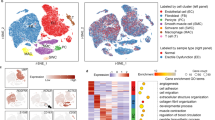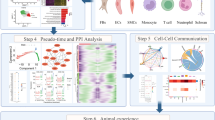Abstract
Intercellular communication plays an important role in erectile function. The goal of this study, therefore, was two-fold. Firstly, to determine if cultured corporal smooth muscle cells provide a valid model system for evaluating the role of junctional communication to erectile physiology, and secondly, to explore the possibility that there may be age-related alterations in Cx43 mRNA expression. Human corpus cavernosum tissue was obtained from 31 patients with a mean age of 58 (range 27–89), while cell cultures were developed from 21 distinct patients with a mean age of 57 (range 26–59). Northern blots revealed that mRNA for Cx43 was expressed at detectable levels in all samples examined. It migrated as a transcript with an apparent size of 3.1 Kb. Western blots revealed the presence of multiple bands of Cx43 protein in both tissues and cells. However, Cx43 protein in tissue predominantly migrated as a 45 kDa band, while the Cx43 from cultured cells predominantly migrated as 41 kDa band. Cx43 mRNA expression was similarly heterogeneous in both frozen tissues and cultured cells. An ∼3–5-fold increase in Cx43 mRNA levels was observed in cultured cells relative to frozen tissue, but the expression of Cx43 mRNA was not further altered upon passaging (p1–5). When Cx43 mRNA levels were normalized, and expressed as a ratio of the Cx43/β-tubulin mRNA, there was a significant negative correlation between patient age and Cx43 levels on frozen tissues, but not on cultured cells. We conclude that: (1) There is similar heterogeneity/variability in Cx43 mRNA levels in frozen tissues and cultured cells derived from human corpus cavernosum. (2) That the expression of Cx43 mRNA in cultured cells is sufficiently stable, and similar to, expression levels in tissue as to provide a valid and physiologically relevant model system for further studying the role(s) of Cx43 in the regulation of penile erection. (3) There is a statistically significant, albeit modest, negative correlation between the Cx43/β-tubulin ratio and patient age in frozen corporal tissue strips, but not on cultured corporal smooth muscle cells. Such observations provide further evidence for the plasticity of intercellular communication in the erectile process. Moreover, the similarities in the apparent regulation of Cx43 mRNA levels and that of the putative ‘housekeeping’ gene β-tubulin, may suggest that Cx43 is constitutively synthesized in this tissue.
This is a preview of subscription content, access via your institution
Access options
Subscribe to this journal
Receive 8 print issues and online access
$259.00 per year
only $32.38 per issue
Buy this article
- Purchase on Springer Link
- Instant access to full article PDF
Prices may be subject to local taxes which are calculated during checkout
Similar content being viewed by others
Author information
Authors and Affiliations
Rights and permissions
About this article
Cite this article
Serels, S., Day, N., Wen, Y. et al. Molecular studies of human connexin 43 (Cx43) expression in isolated corporal tissue strips and cultured corporal smooth muscle cells. Int J Impot Res 10, 135–143 (1998). https://doi.org/10.1038/sj.ijir.3900336
Received:
Revised:
Accepted:
Published:
Issue Date:
DOI: https://doi.org/10.1038/sj.ijir.3900336



